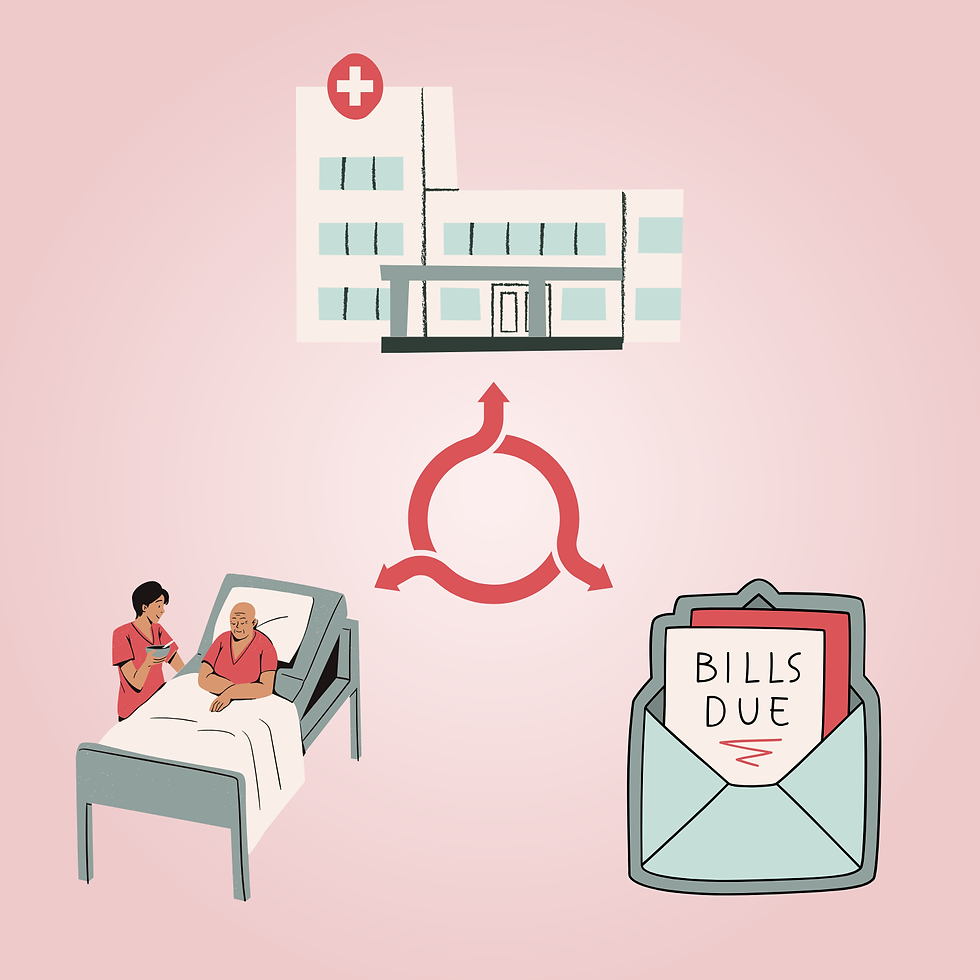Ethics of Medical Resource Allocation
- Shubhika Munot
- Nov 1, 2022
- 3 min read
Should scarce medical resources be provided to those who have waited the longest for them or require it the most? Should a 20-year-old be prioritized over an 80-year-old for a life-saving cure? Let’s say we have one hospital bed for every 1000 citizens or only 57,000 ventilators in a country of over 1.3 billion people [1]. Who gets precedence? Unfortunately, this is the very challenge that plagues many developing countries every day.

How do we fairly allocate medical resources, especially when there is a critical shortage for them? This brings us to the conversation on the ethics of healthcare rationing, which has never been more imperative than today as we strive to recover from a global pandemic. A pandemic that has exposed the poor healthcare systems around the world, especially in my home country of India where systemic inequities are highly prevalent – whether this be the lack of primary care providers, low medical supplies, inadequate hospital infrastructure, or shortages of medical devices. Those who can least afford these limited resources are disadvantaged the most, while, the private healthcare sector continues to grow, providing for the urban rich. However, rationing simply based on socioeconomic status is evidently unfair, so here are some alternative approaches of distribution:
· Aged-based approach: Most experts believe that a country should distribute their strained resources such that it simultaneously saves the most live and maximizes the benefits received, either by prioritizing patients more likely to recover or have a longer post-treatment life. This is supported by the fair innings approach developed by Alan Williams, which contends that the lives of the young are of higher value as compared to patients who have lived a long life (i.e., already had a “fair inning”). [2]
· Providers of the family: The policies of the World Bank contest that those of working age, who provide for a household, should be given more importance, as they often work to financially sustain not just themselves but also their family. [3]
· Economic approach: This approach claims that those less well-off, particularly in developing countries, deserve a higher priority as they are often more susceptible to poor health and possibly live in more vulnerable environments, wherein spreading of infections is more likely. Thus, treatment of these patients could contain the transmission of potential diseases. [4]
Despite all these considerations, no perfect solutions to rationing healthcare exist and medical professionals, policy makers and the public are stuck with tough choices. However, greater regulation, public and private partnerships, and standardization of healthcare across a country are essential and urgent to move forward. Along with this, an increase of awareness about bioethics, especially in developing countries, is imperative to gain collective understanding about how to adequately respond to considerations of rationing and allocation.
If you would like to know more about the ethics of healthcare rationing, feel free to checkout this episode of my podcast where I spoke with Dr Saumil Kapadia about allocating medical resources in a developing country like India, especially in a pandemic:
Edited by: Caroline Palmer
Graphic Designed by: Eugene Cho
References
Singh P, Ravi S, Chakraborty S. COVID-19: Is India’s health infrastructure equipped to handle an epidemic? Brookings.edu.blog. 2020 Mar 24[cited 2020 Apr 8]. Available from: https://www.brookings.edu/blog/up- front/2020/03/24/is-indias-health-infrastructure-equipped-to-handle- an-epidemic/
Williams A. Intergenerational equity: An exploration of the ‘fair innings’ argument. Health Economics. 1997 Mar-Apr;.6(2), 117–32
Wagstaff A. QALYs and the equity-efficiency trade-off. J Health Econ. 1991 May; 10(1), 21–41. doi: 10.1016/0167-6296(91)90015-f.
Mahurkar, A. (2020). Ethics in the COVID-19 emergency: Examining rationing decisions. Indian Journal of Medical Ethics, 05(02), 168–169. https://doi.org/10.20529/ijme.2020.049



Comments